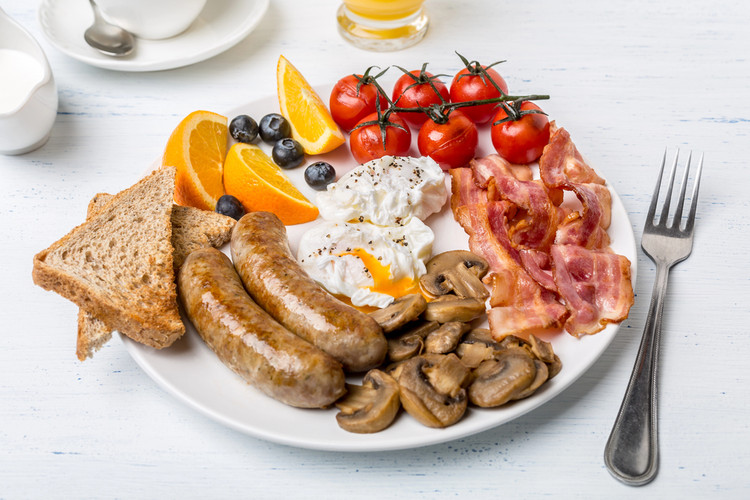Calorie Density 101: The Hidden Key to Eating More and Weighing Less
Posted by Portions Master on 10th Oct 2025
When most people think about losing weight or maintaining a healthy lifestyle, they focus on eating less.
But what if you could actually eat more—more volume, more satisfaction, while still managing your calorie intake and reaching your goals?
The secret lies in understanding calorie density, one of the most powerful yet underrated principles in nutrition. Master this concept, and you can reshape your eating habits for life, without feeling deprived.
What Is Calorie Density?
Calorie density refers to the number of calories in a given weight or volume of food, usually measured as calories per gram.
-
High-calorie-dense foods have a lot of calories packed into a small amount of food.
-
Low-calorie-dense foods have fewer calories for the same weight, meaning you can eat more of them without going overboard on energy intake.
For example:
-
1 cup of fresh spinach = ~7 calories
-
1 cup of cheddar cheese = ~500 calories
Same volume, wildly different calorie counts. That’s calorie density in action.
Why Calorie Density Matters
Your stomach has stretch receptors and satiety signals that tell your brain when you’ve had enough to eat. These signals are triggered more by food volume than calorie content.
This means you can eat a generous plate of low-calorie-dense foods, feel full, and still stay within your calorie goals—something that’s much harder to do with high-calorie-dense foods.
The Calorie Density Scale
Foods can generally be grouped into four categories:
| Calorie Density Level | Calories per Gram | Examples |
|---|---|---|
| Very Low | 0–0.6 | Fruits, non-starchy vegetables, broth-based soups |
| Low | 0.6–1.5 | Legumes, starchy vegetables (potatoes, corn), whole grains |
| Medium | 1.5–4.0 | Lean meats, fish, low-fat dairy, bread |
| High | 4.0+ | Oils, butter, cheese, nuts, fried foods, desserts |
How to Use Calorie Density to Your Advantage
1. Fill Half Your Plate with Very Low–Calorie-Dense Foods
Think leafy greens, cucumbers, bell peppers, zucchini, watermelon, berries. These foods bulk up your meals for minimal calories.
2. Use Low-Calorie-Dense Foods to Stretch Portions
Add beans to pasta, veggies to stir-fry, or lentils to chili to increase volume without dramatically increasing calories.
3. Eat High-Calorie-Dense Foods Mindfully
Cheese, oils, nuts, and chocolate aren’t “bad”—they’re just calorie-concentrated. Enjoy them in measured amounts and pair them with lower-calorie-dense foods to create balance.
4. Make Soups, Salads, and Stews Your Friends
Water-rich foods (soups, smoothies, stews) help fill you up for fewer calories, thanks to their low calorie density and high volume.
5. Watch Out for Calorie Density Traps
Some foods look “light” but pack a punch—granola, dried fruit, smoothie bowls, and creamy coffee drinks are common culprits.
The Portions Master Advantage
Here’s where technology can turn calorie density from a good idea into an everyday habit. The Portions Master App uses AI-powered food recognition and volumetrics to:
-
Instantly identify foods and estimate portion sizes from a photo.
-
Show you calorie density visually, so you understand how much food you’re really getting for the calories.
-
Suggest lower-calorie-dense swaps that keep the volume of your meal the same (or bigger) while reducing calorie load.
-
Track your daily patterns so you can spot high-calorie-dense days and adjust before it affects your progress.
Instead of guessing or manually logging every bite, you get instant, personalized feedback, making calorie density not just a theory, but a daily practice.
Sample Day of Low-Calorie-Dense Eating
Breakfast:
-
Oatmeal with berries and a sprinkle of chia seeds (voluminous, high-fiber)
Lunch:
-
Big salad with mixed greens, grilled chicken, chickpeas, tomatoes, cucumbers, and a light vinaigrette
Snack:
-
Air-popped popcorn and a piece of fruit
Dinner:
-
Grilled salmon, roasted vegetables, and a baked potato topped with salsa instead of butter
The Bottom Line
Calorie density is the hidden key to eating more while still hitting your goals. By focusing on food volume, fiber, and water content, you can fill your plate, stay satisfied, and make sustainable progress—without living in constant hunger mode.
And with tools like the Portions Master App, you can make calorie density an effortless part of your lifestyle.

